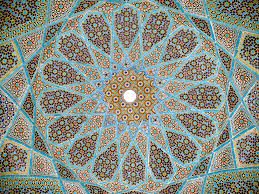Throughout my life I have always been quite anxious about maths. In primary school I was that child who would try and copy other people’s work and would be too scared to ask my teachers for help. Progressing onto secondary school, my confidence in maths was quite still quite low and, although I got the grades I needed, I would have a panic.
When I walked into the maths department on the day of results and told them I got an A in my second attempt at Intermediate 2 all the teachers cheered my favourite teacher, Miss  McCutcheon, gave me a big hug. But I think this was because they’d finally be getting rid of me and my Negative Nelly approach to maths!
McCutcheon, gave me a big hug. But I think this was because they’d finally be getting rid of me and my Negative Nelly approach to maths!
When starting my first year placement the thought of teaching maths to a P7 class petrified me. Of course I’d know how to do the maths that I’d be teaching them, but it was the panic of “how am I going to teach these children something that would have taken me so long to grasp when I was their age?!” But I learnt almost instantly that the more confident I was in front of them the more confident they were and with links to real life it made the lessons a lot more understandable.
I remember one lesson in particular and it was about nets of 3D shapes. I brought in tissue boxes and a Toblerone box and it was funny how engaged they were with such basic shapes. But being able to see real life examples proves the importance of maths and that we use it all the time.
This leads me on to say that the teaching of maths is more than just adding and knowing your times tables. It is about making it relatable to real life, engaging and fun and through studying and working through this elective I have seen such a huge variety of real life examples of maths.
Liping Ma (1999) also helps us understand the importance of having a Profound Understanding of Fundamental Mathematics (PUFM). She had four concepts that she believed that “elementary” teachers should have. She titled them basic ideas, longitudinal coherence, multiple perspectives and interconnectedness. (Ma, 1999, pp.122)
She explains basic ideas as the idea of being able to appreciate the more simple, but impressive, forms of mathematics. This is vital in teaching maths to children as although it  might be straightforward, it will be something which will help expand their understanding of other topics.
might be straightforward, it will be something which will help expand their understanding of other topics.
In my opinion, longitudinal coherence is the most important property Ma found. This is when a teacher knows that their pupils have a good understanding of a specific topic when they’re ready to rather than knowing it by a certain age. I feel that so many people are concerned about pupils passing and knowing how to do aspects of maths for statistics and league tables and not having pupils who are happy and confident in their understanding of maths.
Ma explains multiple perspectives as teachers and pupils being able to see that there can be a variety of ways of reaching a solution with advantages and disadvantages to them. This is something I noticed on placement as I needed to teach pupils how to understand different concepts in a different way than I’d previously explained and that there is usually more than one way to an answer.
Finally, she explains interconnectedness as topics within in maths and outwith maths being related. Through studying this elective I have seen this clearly with subjects like art, music and science and this allows me to develop lessons to allow them to relate to more than just one subject.
Studying Ma’s theory throughout this Discovering Mathematics elective has allowed me to see the importance of having a PUFM. As I previously stated, maths is more than adding and Ma’s theory clearly shows this. This is most definitely something I will apply to my professional development and I can safely say that my maths anxiety is something of the past.

























 always remember being that child who was sat beside a pupil, who I always thought, was smarter than me and felt I needed to look at their answers just so I didn’t get in trouble for not completing the work or having too many wrong answers. Of course this was not the case. The teacher I had would always give me the support I needed- it was just a fear of being embarrassed that I always seemed to have.
always remember being that child who was sat beside a pupil, who I always thought, was smarter than me and felt I needed to look at their answers just so I didn’t get in trouble for not completing the work or having too many wrong answers. Of course this was not the case. The teacher I had would always give me the support I needed- it was just a fear of being embarrassed that I always seemed to have.